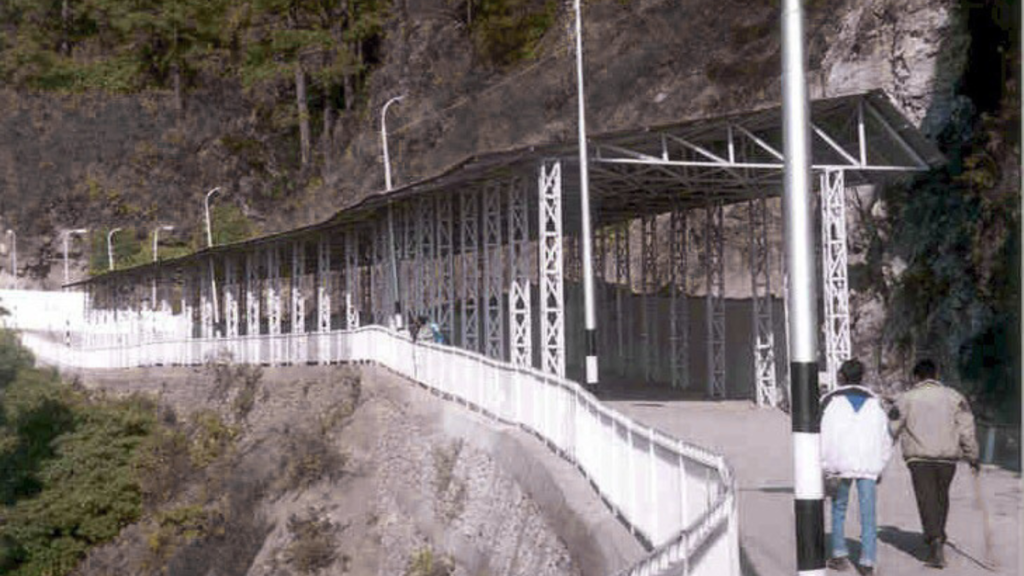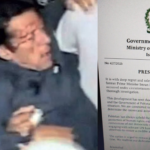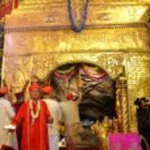Every year, millions of people journey to the holy shrine of Maa Vaishno Devi, tucked in the Trikuta Hills of Jammu and Kashmir. The trek from Katra, the base town, to the sacred cave is a spiritual adventure filled with devotion, scenic beauty, and a sense of peace. If you’re planning this pilgrimage, one of the first things you’ll want to know is the distance between Katra and Vaishno Devi, along with what to expect on the way. This guide breaks it all down in a simple, heartfelt way, sharing tips, options, and insights to make your trip smooth and meaningful. Whether you’re a first-time visitor or returning to seek blessings, let’s walk through this journey together.
Understanding the Katra to Vaishno Devi Distance
The distance from Katra to Vaishno Devi is about 13 kilometers (8 miles) one way, making it a 26-kilometer round trip if you trek both ways. The path is a well-paved track winding through the hills, offering stunning views and a mix of gentle slopes and steeper climbs. Most pilgrims cover this distance in 4 to 6 hours, depending on their pace, fitness, and stops along the way. The trail starts at Banganga, the entry point in Katra, and ends at the Bhawan, where the holy cave is located. You’ll pass key stops like Ardhkuwari and Sanjichhat, each with its own significance. The distance feels manageable for many because of the lively atmosphere—chants of “Jai Mata Di” and fellow pilgrims keep you motivated. If walking feels tough, you can opt for ponies, palanquins, or helicopters, which I’ll cover later. For now, know that this 13-kilometer stretch is more than a physical journey; it’s a path to connect with your faith.
Why the Distance Matters for Pilgrims
The 13-kilometer trek isn’t just about covering ground; it’s a deeply personal experience. For many, walking this distance is a way to show devotion, with each step bringing them closer to Maa Vaishno Devi. The journey tests your stamina but also fills you with energy from the surrounding mountains and the shared spirit of pilgrims. Knowing the distance helps you plan—whether you’re deciding to walk, ride, or mix both. It also sets expectations for time, especially if you’re traveling with kids, elderly family members, or less active folks. The path is well-maintained, with rest stops, food stalls, and water points, so the distance feels less daunting. Still, it’s wise to prepare for the climb, especially the steeper parts near Ardhkuwari. By understanding the distance, you can focus on the spiritual side of the trip rather than worrying about logistics.
Key Stops Along the 13-Kilometer Route
The trek has three main stops that break up the 13-kilometer journey. First is Banganga, just 1 kilometer from Katra, where pilgrims often take a holy dip or start their yatra with prayers. Next, Ardhkuwari, about 6 kilometers in, is a sacred cave temple where Maa Vaishno Devi is believed to have meditated. It’s a good spot to rest. Finally, Sanjichhat, at 9.5 kilometers, offers panoramic views and a chance to recharge before the final 3.5-kilometer stretch to Bhawan. Each stop has food, water, and restrooms, making the journey comfortable. These landmarks help you pace yourself and add spiritual meaning to the trek.
Elevation and Terrain Challenges
The trail rises from 2,500 feet in Katra to about 5,200 feet at Bhawan, so you’ll feel the climb, especially in the 2-3 kilometer stretch before Ardhkuwari. The path is paved and wide, but some sections are steep, with steps or inclines. Comfortable shoes and a walking stick can help. The terrain isn’t rough, but it’s not flat either—expect a mix of gradual slopes and sharper ascents. Monsoon season (July-September) can make the path slippery, so check weather updates. Despite the challenges, the trail is safe, with railings and security at regular intervals.
How to Travel the Distance: Walking, Ponies, or Helicopter
You’ve got options to cover the 13 kilometers, depending on your fitness, time, and budget. Walking is the most popular choice, letting you soak in the spiritual vibe and stunning views. It’s free and rewarding but requires decent stamina. Ponies and palanquins are great for those who find walking tough—ponies cost around ₹1,000-1,500 one way, while palanquins (carried by porters) range from ₹4,000-6,000. Both can be booked at Katra or Banganga. For a quicker trip, helicopters fly from Katra to Sanjichhat (9.5 km point), cutting the trek to just 3.5 kilometers. Helicopter tickets cost ₹1,500-2,000 per person one way, but you’ll need to book in advance. Each option has its charm—walking feels soulful, ponies add a rustic touch, and helicopters save time. Choose what suits your group and enjoy the journey.
Walking the Trek: Tips for a Smooth Journey
If you’re walking, start early in the morning to avoid heat and crowds. Wear comfy shoes, carry water, and pack light snacks. The path has plenty of stalls, but having essentials helps. Take breaks at Ardhkuwari or Sanjichhat to rest and hydrate. Walking sticks, available in Katra, ease the strain on your knees. Keep a steady pace, and don’t rush—the spiritual energy keeps you going. If traveling with kids or elders, plan for more breaks. The return trek can feel tougher, so save some energy. Most importantly, stay positive and chant along with fellow pilgrims—it makes the 13 kilometers fly by.
Pony and Palanquin Options: What to Know
Ponies and palanquins are lifesavers for those with mobility issues or limited time. Ponies carry one person and are guided by handlers, while palanquins are carried by four porters for a smoother ride. Book through registered counters in Katra to avoid scams—check rates and negotiate politely. The ride takes 3-4 hours, and you’ll still enjoy the scenic beauty. Be kind to the animals and porters; they work hard. These options don’t cover the final 500 meters to the cave, so you’ll walk or use battery-operated carts there. Confirm return bookings to avoid waiting later.
Helicopter Service: A Faster Way to Bhawan
Helicopters are a premium option, flying you to Sanjichhat in 8-10 minutes. From there, it’s a 3.5-kilometer walk or pony ride to Bhawan. Tickets are available online or at Katra’s helipad counter, but slots fill fast, especially during peak seasons (Navratri, Diwali). The service runs from 8 AM to 5 PM, weather permitting. It’s pricier but ideal for those short on time or with health concerns. You’ll still trek a bit, so pack light and wear good shoes. The aerial view of the hills is a bonus, adding a unique touch to your pilgrimage.
Planning Your Trip: Time, Seasons, and Permits
The 13-kilometer trek needs some planning to ensure a hassle-free experience. Most pilgrims complete the round trip in 10-12 hours, including darshan (prayers at the cave). Start early—4 or 5 AM—to beat crowds and heat. The best seasons are March-May and September-November when the weather is pleasant. Monsoons (July-August) bring rain and slippery paths, while winters (December-February) can be cold but serene. You’ll need a free Yatra Registration Slip from Katra’s Yatra Counter or online—it’s mandatory and checked at Banganga. Peak times like Navratri see heavy crowds, so book helicopters or accommodations early. With these basics, you can focus on the spiritual joy of the journey rather than logistics.
Best Time to Visit for a Comfortable Trek
Spring (March-May) and autumn (September-November) offer mild weather, with temperatures between 15-25°C, making the 13-kilometer trek pleasant. Summer (June) is warm but doable with early starts. Monsoons make the path slippery, though the greenery is stunning. Winters are chilly, with possible snow, but the trail stays open, and fewer crowds make it peaceful. Festivals like Navratri draw huge crowds, so plan for longer wait times. Check weather forecasts and pack accordingly—light layers for spring, rain gear for monsoons, and warm clothes for winter.
Getting Your Yatra Registration Slip
Every pilgrim needs a Yatra Registration Slip to start the trek. Get it free at Katra’s Yatra Parchi Counter near the bus stand or online via the Shri Mata Vaishno Devi Shrine Board website. It’s quick—just show ID and register your group. The slip is checked at Banganga, so keep it handy. During peak seasons, counters get crowded, so arrive early or apply online. The slip ensures safety and crowd control, letting you focus on the 13-kilometer journey with peace of mind.
What to Expect at Vaishno Devi Bhawan
After covering the 13 kilometers, reaching Bhawan feels like a triumph. The main cave shrine, where Maa Vaishno Devi resides as three sacred pindis (rock forms), is the heart of the pilgrimage. The atmosphere is electric with devotion—chants, bells, and the glow of lamps create a divine vibe. You’ll need to deposit belongings at lockers (free) and join the darshan queue, which can take 1-3 hours during peak times. The cave is narrow, so move steadily. Free and paid special darshans are available for faster entry. After darshan, visit Bhairon Nath Temple (2.5 km further) to complete the pilgrimage. Bhawan has rest houses, food stalls, and medical facilities, ensuring comfort before your return trek or ride.
Darshan Process and Tips
At Bhawan, store your bags and phones (not allowed inside) at free lockers. Join the darshan queue, which is orderly but can be long during festivals. Special darshan tickets (₹100-500) shorten wait times—buy them at Katra or Bhawan. The cave is small, so darshan is quick but powerful. Stay calm, follow instructions, and avoid pushing. After darshan, collect prasad (blessed offerings) and rest at nearby stalls. Visit Bhairon Nath Temple to complete the ritual—it’s a short trek with rewarding views.
Facilities at Bhawan for Pilgrims
Bhawan is well-equipped for pilgrims. Free rest houses and paid dorms offer places to nap. Food stalls serve vegetarian meals, from parathas to rice-dal combos, at affordable prices. Clean drinking water and toilets are plentiful. Medical aid and pharmacies are on-site for emergencies. Battery-operated carts help elderly pilgrims cover the final 500 meters to the cave. The Shrine Board ensures cleanliness and safety, so you can relax and reflect on your 13-kilometer journey before heading back.
Making the Journey Your Own
The Katra to Vaishno Devi trek is more than a 13-kilometer hike—it’s a chance to connect with your faith, nature, and fellow pilgrims. Whether you walk, ride a pony, or take a helicopter, the journey feels personal and profound. Plan ahead—get your Yatra Slip, pick the right season, and choose a travel option that suits you. Pack light, wear comfy shoes, and carry a heart full of devotion. The hills, chants, and shared smiles along the way make every step worth it. As you cover the distance, you’ll find that the real reward isn’t just reaching Bhawan but the peace and strength you gain along the path. Jai Mata Di.



